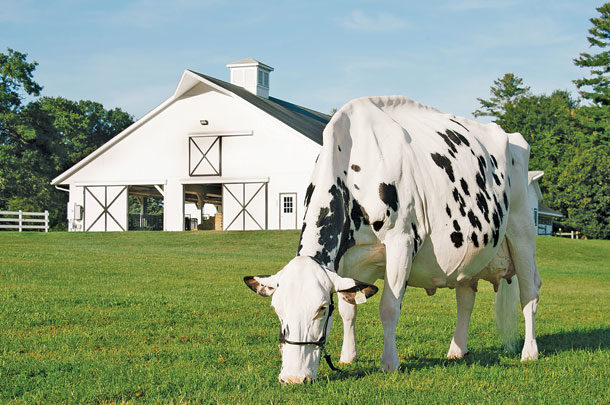I’ve been a dairy cattle photographer for over 20 years, and one thing is for certain – every day is different. There is no typical day for me.
One day I’m photographing dairy cattle at a show in New York, while the next day I am in our Green Bay, Wisconsin, office processing photos. The following day, I’m flying to the West Coast to photograph cattle on a commercial dairy in California, while the next day, I might be picturing bulls at a stud farm. Each day is unique.
Regardless of what I kind of photo shoot I am preparing for, I begin by charging my camera batteries and going over my camera equipment the night before. I clean my camera lens surface, make sure I have multiple fresh memory cards ready to go and double-check my “prep” supplies. These are typically livestock-approved spray paints (in order to cover stains, scars, blemishes), fly spray, brushes, paper towels, etc.
Sometimes my day begins at 3 a.m. in order to drive and arrive at my scheduled farm in time. Once at a given photo shoot, I spend time talking to my clients about the animals we are going to photograph and what kinds of photos they are wanting. Usually, it is the industry-standard “side view” photo.

In addition to the traditional side profiles, Fisher also shoots scenic photos of livestock, where the animal is less posed and free to move around. Photo provided by Cybil Fisher.
I begin by looking the animals over and then preparing them for the photo. Once they are ready, we walk them to the photo area and set them up. There are always five people to help on any given photo. One person to hold the animal’s head (halter), two people to move each of the animal’s front legs into the correct position, another person holds the tail in place, and the final person is in front of the animal in order to attract the cattle’s attention and get the ears alert.
Other times, I do a more “scenic” photo, where the animal is less posed and free to move around her natural environment. During this time, I try to capture images of her that seem natural.
After every photo session, be it in a hotel at night or in my home office, I pull up every image taken on an animal and select the one that will be used. Each photo I take is assigned its own unique negative number for our records as well as for future billing and any reorders that come through (for sale catalogs, etc.).

Photo provided by Cybil Fisher.
When I’m not actively photographing cattle, a typical day for me begins with coffee and checking my email. A lot of our photo session requests come in via email, and I have two other photographers who work for my company (Lea McCullough-Jordan and Jenny Thomas). They have photo schedules independent of mine. So depending on what area of the country each of us will be at and when, I try to help facilitate those scheduling requests.
Lea, Jenny and I all load our images to my office by placing them on an ftp server that we then use to download the photos and store on an external hard drive. The photos are then processed for background changes (if needed), color correction, and each photographer’s logo is added to every photo. I have a graphics team in place that assists with this so, even when I am not in the office, we can keep the photo processing moving along. However, I still look every image over before we send the final product out to our clients in order to double-check for quality assurance.
When I’m not photographing or processing photos, I am usually scheduling future photo shoots and preparing for the travel logistics associated with those shoots. Every day comes with its own unique set of circumstances and challenges; however, at the end of the day I love the ability to travel to different farms and interact with a wide variety of individuals.






